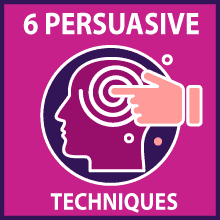
Let’s be honest — there’s no one waiting for a cold email from you, and there’s no dancing around the fact that cold emails are a battle for a prospect’s attention. But what if I told you that there’s a way to make it ten times more likely to receive a positive response? Introducing Robert Cialdini’s and his 6 persuasive techniques.
It’s no secret that the average sales reps lose their prospect’s attention in just the first few seconds of an interaction. And the culprit? They didn’t manage to persuade their prospect.
See, it’s not enough to build a great product and send out cold emails to introduce it. The world is doing just fine without your sales pitches.
If you want people to pay attention, you have to persuade them.
What are persuasive techniques?
Persuasive techniques are widespread in advertising and marketing. There’s a good chance you came across at least one today. For example, if you visited an online store (‘deal ends in 15 minutes!’) or received a promotional newsletter (‘we asked an expert…’).
But can they make your cold emails more successful?
The answer is Yes. But first, we need to talk about the man who started it all.
If you research persuasion and human behavior, it’s impossible not to encounter this man:

That’s Robert Cialdini. In 1984 he published a book called Influence: The Psychology of Persuasion.
Cialdini based the book on his experience as a used car salesman and telemarketer. The Psychology of Persuasion became a massive success. As of today, The Psychology of Persuasion is one of the 100 most popular motivational books on Amazon. It’s still selling like pancakes — and for good reason.
In the book, Cialdini outlines six basic principles of persuasion:
- Reciprocity
- Scarcity
- Authority
- Consistency
- Liking
- Consensus
Since 1984 salespeople around the world started putting Cialdini’s principles to use. And what they’ve found is that they work.
Here’s Cialdini himself, explaining each principle in detail:
Cialdini’s principles help you take advantage of your expertise to find a more powerful way to pitch your product. If you feel that your sales pitch is weak, they can help you identify why.
And if you don’t believe me, believe former US President Barack Obama. In 2012, he hired Cialdini for his presidential campaign. The campaign which he won, of course.
Coincidence? I don’t think so.
Persuasive cold email technique #1
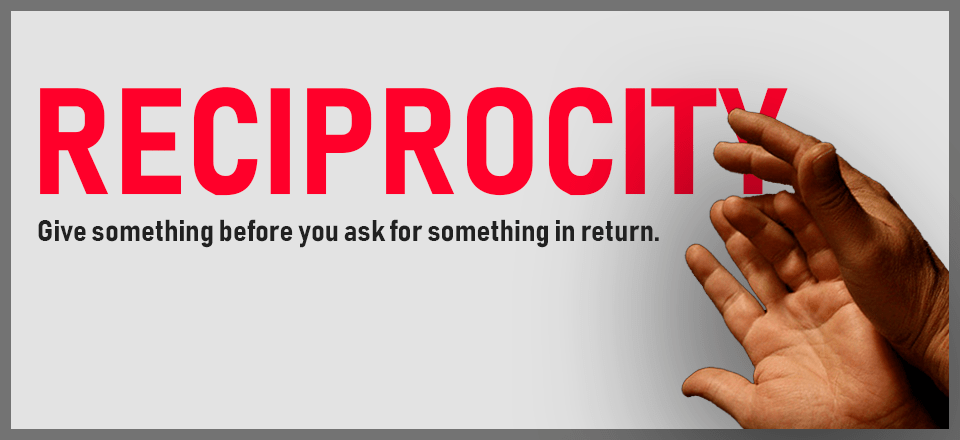
In a nutshell, reciprocity means mutual benefit. You want your prospect to do something? Give them something in return — first.
For a successful prospecting strategy, this persuasive technique is borderline essential because it helps you take advantage of relationship selling. If your cold emails don’t get any traction, there’s a high chance you’re not using the principle of reciprocity.
Reciprocity — Cold email template
Can you spot the problem with this message?
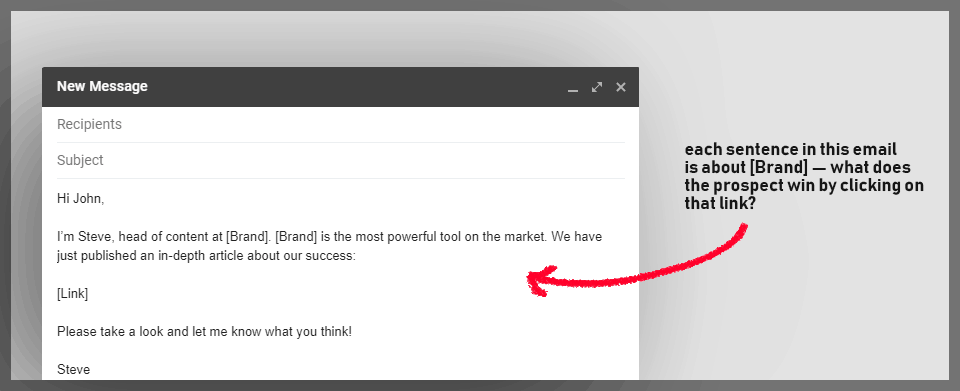
There’s no point for a prospect to click that link. The email above is about [Brand], not about the prospect.
While the sales rep clearly wins if the link is clicked, the prospect can’t be sure that it has value. And to the spam folder, it goes.
Using the reciprocity technique makes for a vastly better cold email:
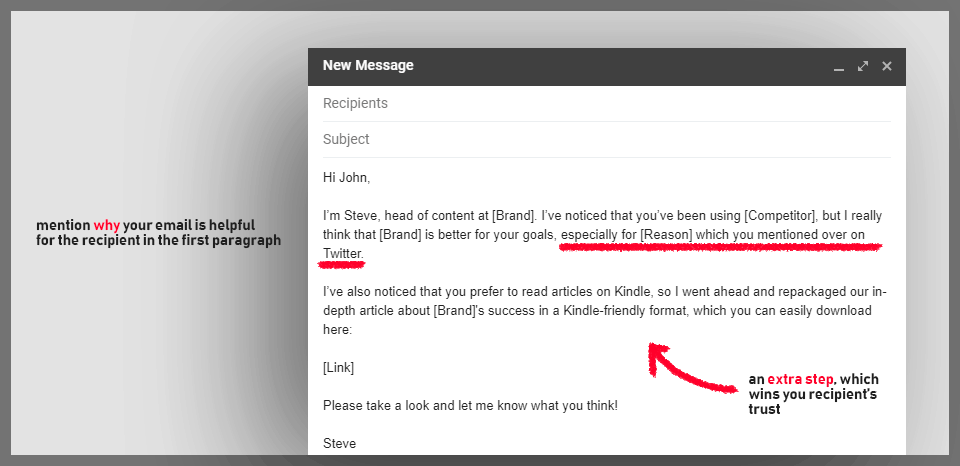
Now, this is a cold email I’d love to receive myself.
Notice that the content isn’t so different. It still promotes the [Brand]’s article. But the way the email is packaged is on another level.
First, the email mentions a reason for getting in touch. Second, it presents the article as the solution for the prospect’s problem. And third, it offers the article in a format specifically created for the prospect.
That’s why it’s going to be 300% more effective than the previous example.
Now, you might wonder whether the trouble is worth it. Writing cold emails like this takes time. But think about it this way. You can spend an hour on a prospect who you have a high chance of converting. Or you can spend an hour on 10 prospects who will ignore your email.
That extra mile is absolutely worth it.
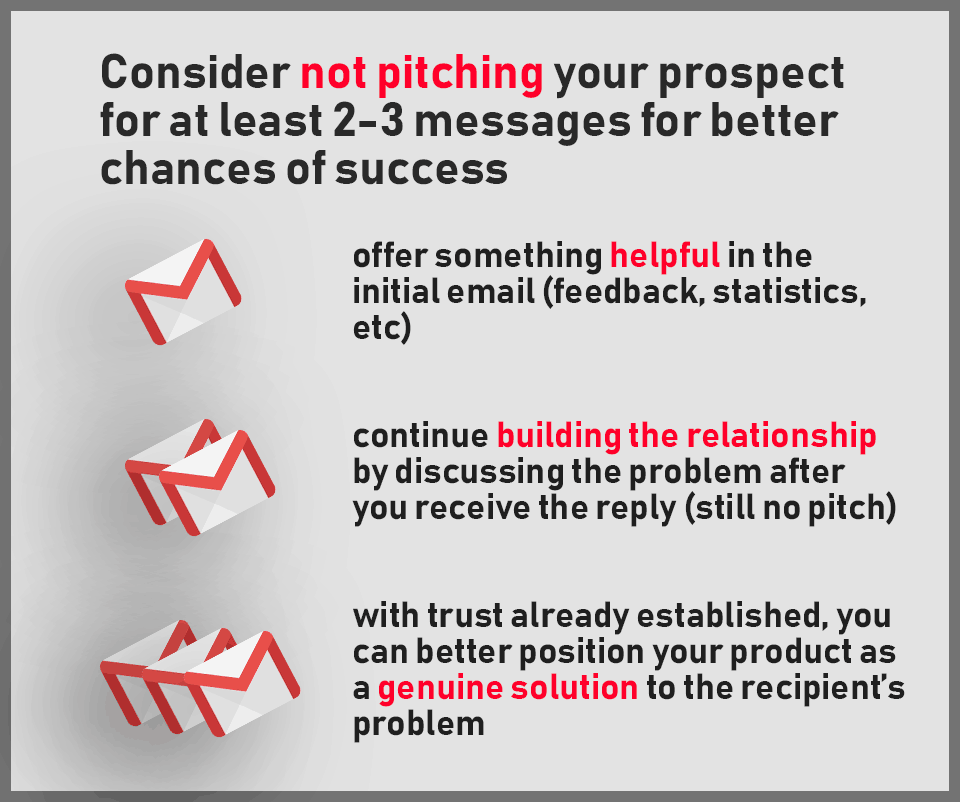
Reciprocity is even more important from a strategic point of view. If you can, take the time to embed it into your cold email strategy.
For example, consider sending the initial email without any kind of a sales pitch at all and proceed with the schedule above.
To recap: give something before you ask for something in return.
Persuasive cold email technique #2
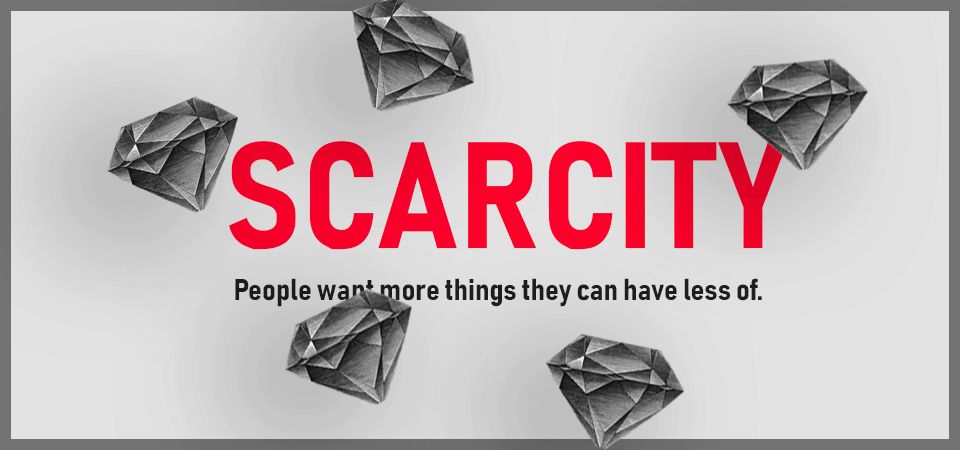
Tell someone they can’t have something, and they instantly want it more.
The scarcity technique is really popular on the internet. A lot of websites blast you with banners screaming ‘this deal ends in 17 minutes!’. You’ve probably seen these.
Scarcity — Cold email template
Here’s Neil Patel using the scarcity technique to attract more visitors to his webinar:
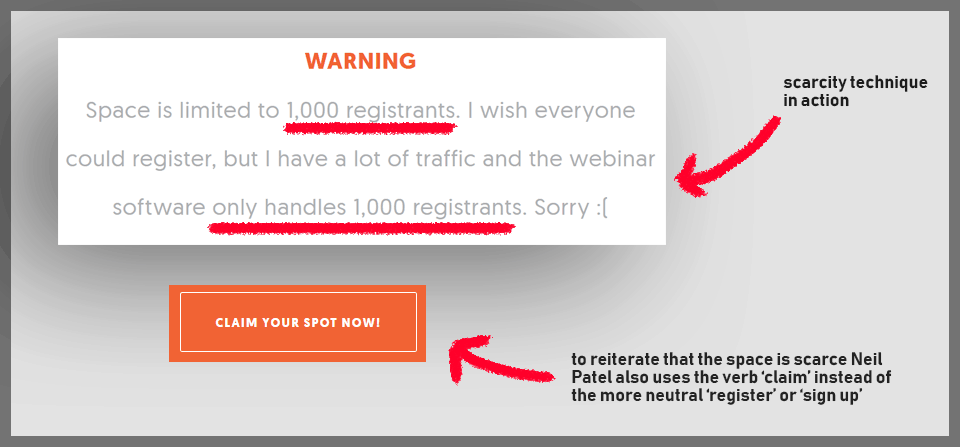
(Source: Neil Patel)
Is space really so limited? I’m sure that Neil could have found a way to bring more than a 1,000 people on board — if he wanted to. But the whole point of this ad on his website is to scale up the urgency.
Ultimately it brings him far more subscribers than if he opened his webinar for everyone. And it doesn’t matter if the content is the same. Tell someone they can’t have something, and they want it more.
So how can you tap into that emotion in your cold emails? Here’s an example:
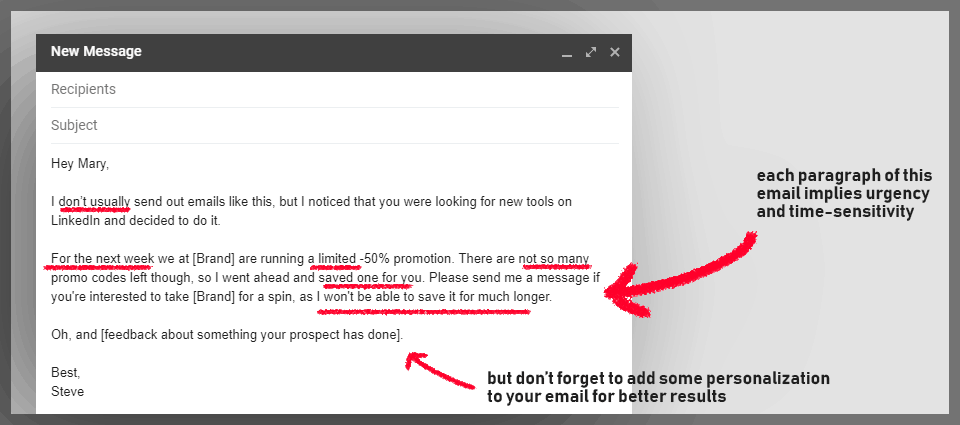
What I find most helpful in Cialdini’s approach to scarcity is different, though. It’s his notion that people fear losing more than they love gaining.
That’s why you should explain what your prospect is losing when they don’t sign up for your product. Allow me to use LeadGibbon for the next example:
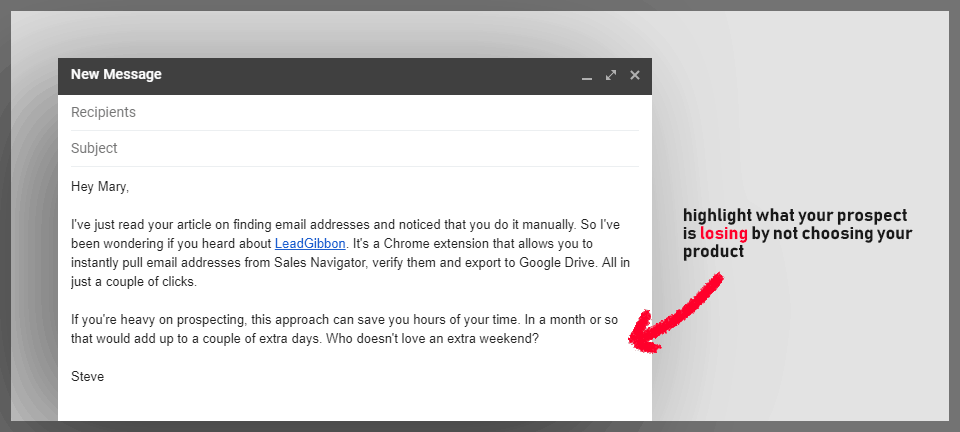
Here’s another example. For years I knew that password managers were convenient and easy-to-use. That didn’t make me sign up for one.
So what made me do it? It was this article by Wired about the excruciating experience of being hacked. I signed up for a password manager right away. I feared losing more than I wanted to gain.
If you manage to tap into that emotion with your cold emails, you’ll bring a lot more prospects on board.
Persuasive cold email technique #3
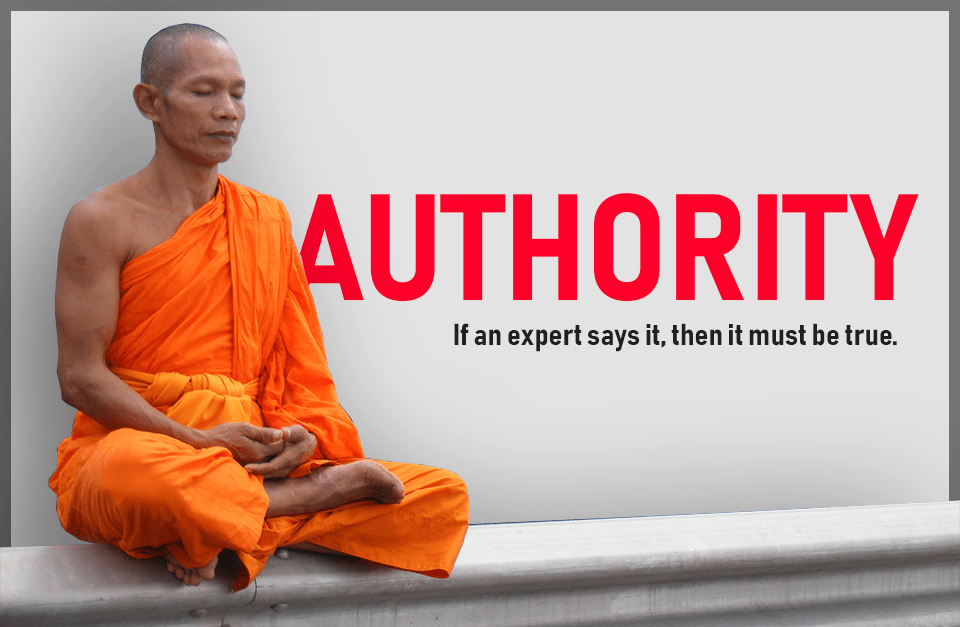
What’s the one thing people want to be sure of before making a buying decision?
That they are not going to regret it later.
That’s why they often seek the opinion of an expert. Somebody who has the necessary experience to promise them that they won’t regret it. If you can come off as an expert, you’re good to go.
Authority — Cold email template
So how do you take advantage of that in your cold emails?
Cut generic terms in your writing. Instead, propose a couple of ways to solve prospect’s problem in your initial email. Support your ideas with hard data and statistics from established sources (or previous experience.)

By the way, make sure that you know your product inside and out before you answer prospect’s questions. If you don’t, refer them to someone else on your team, and highlight that your colleague has more expertise in that particular area.
Persuasive cold email technique #4
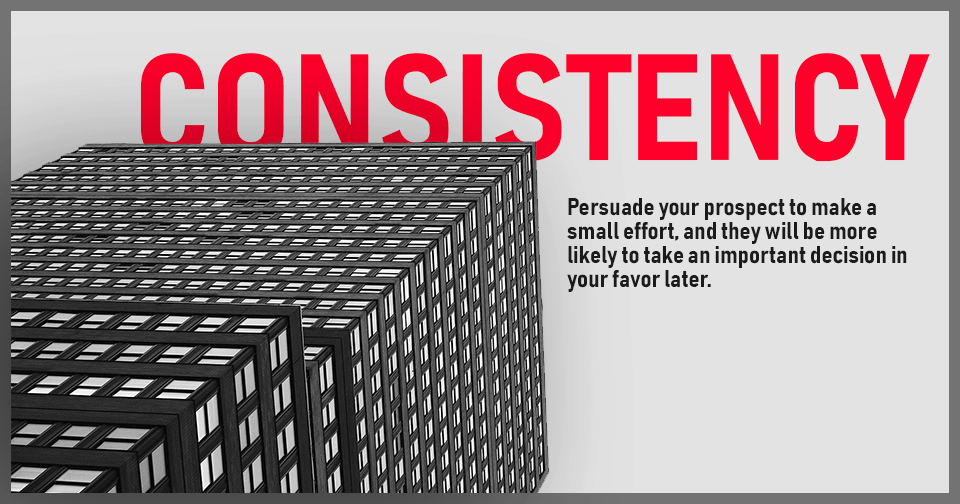
Got a prospect to read one of your articles? It’ll be far easier to subscribe them to your newsletter.
Convinced your prospect to subscribe? Now you can start talking about a deal.
And so on, and so forth.
Consistency — Cold email template
Here’s an example. Start by asking your prospect’s opinion on something related to your business, but not about the business itself:

Then:
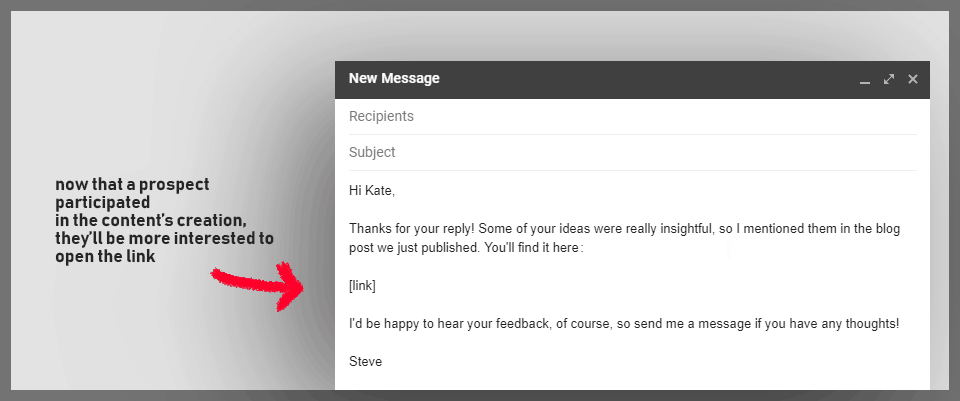
And if they liked it, proceed to your sales pitch:
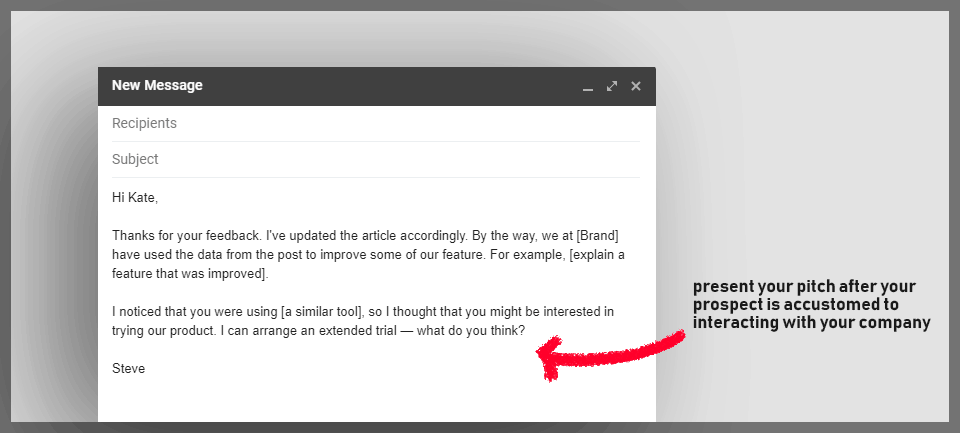
This way you increase the commitment from your prospect step-by-step. For them, it’s easier to make a small, non-binding decision before signing up for a trial or closing a deal.
But once your prospect has made that smaller commitment, the bigger decision suddenly doesn’t seem so big.
Just know which first step is small enough. Going with a decision that’s too demanding for prospects to take instantly (like asking them to sign up for a trial right away) will jeopardize your chances at future success.
Persuasive cold email technique #5

This one is the most obvious technique out there — and the most fun to take advantage of in your emails.
You have better chances to persuade people to close a deal if… they like you! Mind blowing stuff, right?
Well, it might be obvious, but it’s not so easy. Putting the principle of liking into practice requires skill and attention.
Liking — Cold email template
Compare these two cold email templates — which one do you like more?
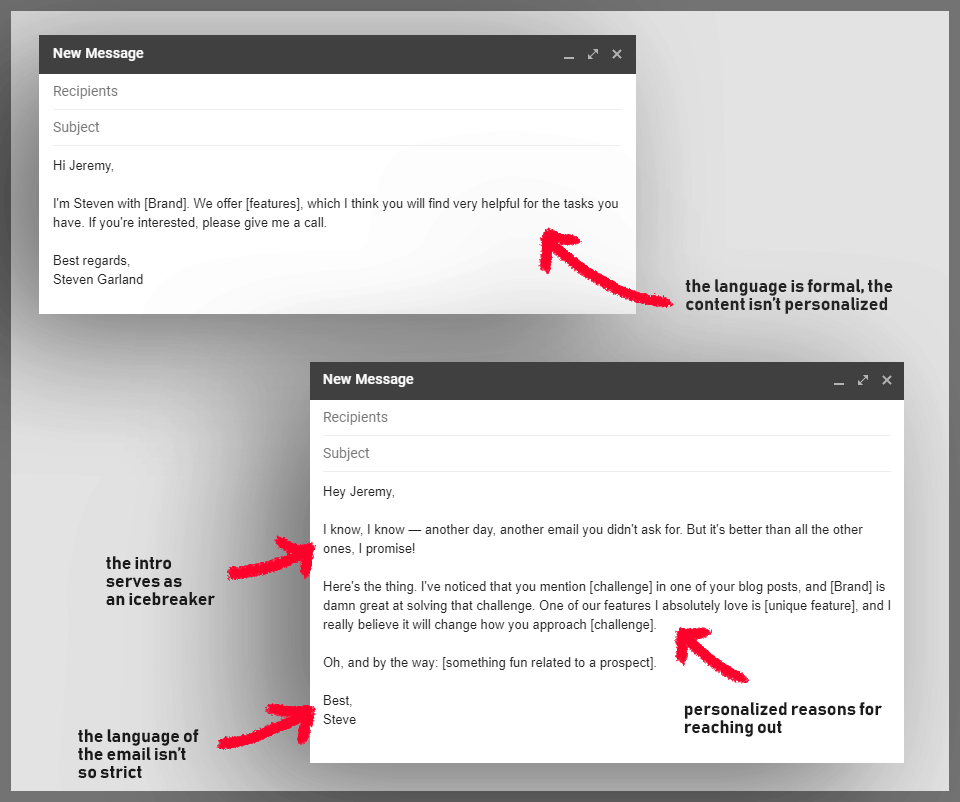
Be human, be fun, and always check your grammar. Try to personalize your cold emails as much as possible before hitting ‘send’. At LeadGibbon, we like our cold emails to be fun and to the point.
(Read our explainers on cold email subject lines, follow ups and thank you emails to learn how to do it the right way.)
Prospects receive tons of identical sales emails each day. They will reply to the one that stands out. Make it yours!
Persuasive cold email technique #6

Humans are social creatures. If they see a lot of people endorsing your product? They are far more likely to make a positive decision on your offer themselves.
Consensus — Cold email template
You can start with hinting at existing social support for your product:
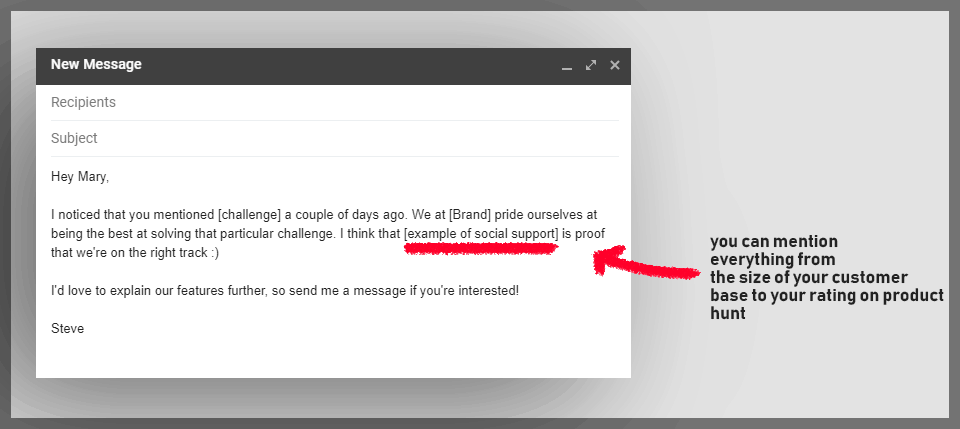
Don’t forget social media, by the way. For example, here’s what you can send your prospect if you want them to take a look at a new case study you’ve published:
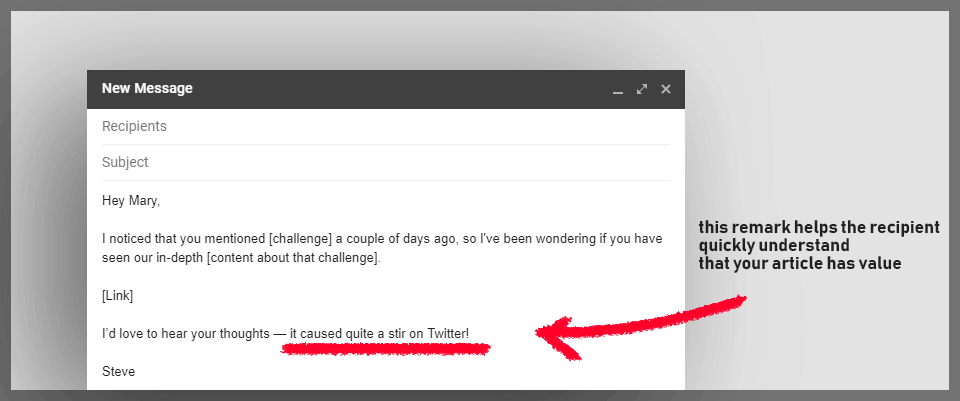
People experience information overload on a daily basis. It’s only natural that they want to optimize their decision-making process. Seeing that other people believe in your company will be enough to nudge them to take a look.
Conclusions
Marketers and politicians have been using Cialdini’s techniques for centuries. Take advantage of them next time you’re writing a cold email and you will leave your competition behind.
But what are your thoughts? Have you encountered these techniques before? Did you use them yourself? Share your thoughts in the comments!

Leave a Reply